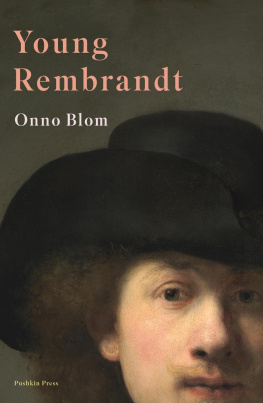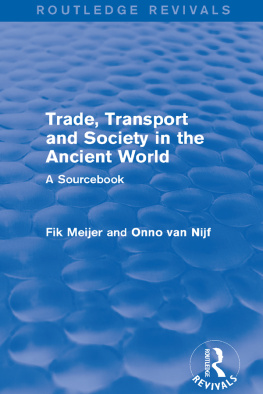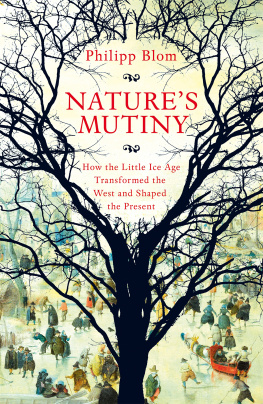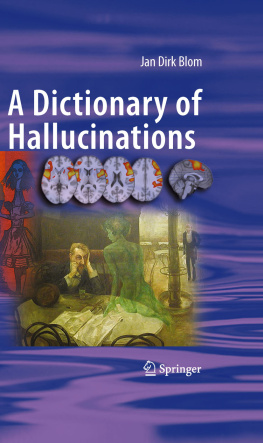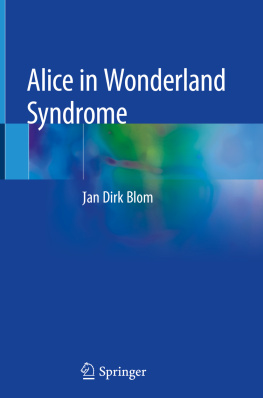Blom Onno - Young Rembrandt
Here you can read online Blom Onno - Young Rembrandt full text of the book (entire story) in english for free. Download pdf and epub, get meaning, cover and reviews about this ebook. year: 2019, publisher: Pushkin Press, genre: Detective and thriller. Description of the work, (preface) as well as reviews are available. Best literature library LitArk.com created for fans of good reading and offers a wide selection of genres:
Romance novel
Science fiction
Adventure
Detective
Science
History
Home and family
Prose
Art
Politics
Computer
Non-fiction
Religion
Business
Children
Humor
Choose a favorite category and find really read worthwhile books. Enjoy immersion in the world of imagination, feel the emotions of the characters or learn something new for yourself, make an fascinating discovery.
- Book:Young Rembrandt
- Author:
- Publisher:Pushkin Press
- Genre:
- Year:2019
- Rating:5 / 5
- Favourites:Add to favourites
- Your mark:
- 100
- 1
- 2
- 3
- 4
- 5
Young Rembrandt: summary, description and annotation
We offer to read an annotation, description, summary or preface (depends on what the author of the book "Young Rembrandt" wrote himself). If you haven't found the necessary information about the book — write in the comments, we will try to find it.
Young Rembrandt — read online for free the complete book (whole text) full work
Below is the text of the book, divided by pages. System saving the place of the last page read, allows you to conveniently read the book "Young Rembrandt" online for free, without having to search again every time where you left off. Put a bookmark, and you can go to the page where you finished reading at any time.
Font size:
Interval:
Bookmark:
Ich lebe ganz mit Rembrandt
I live my days entirely with Rembrandt
JOHANN WOLFGANG VON GOETHE, 1774
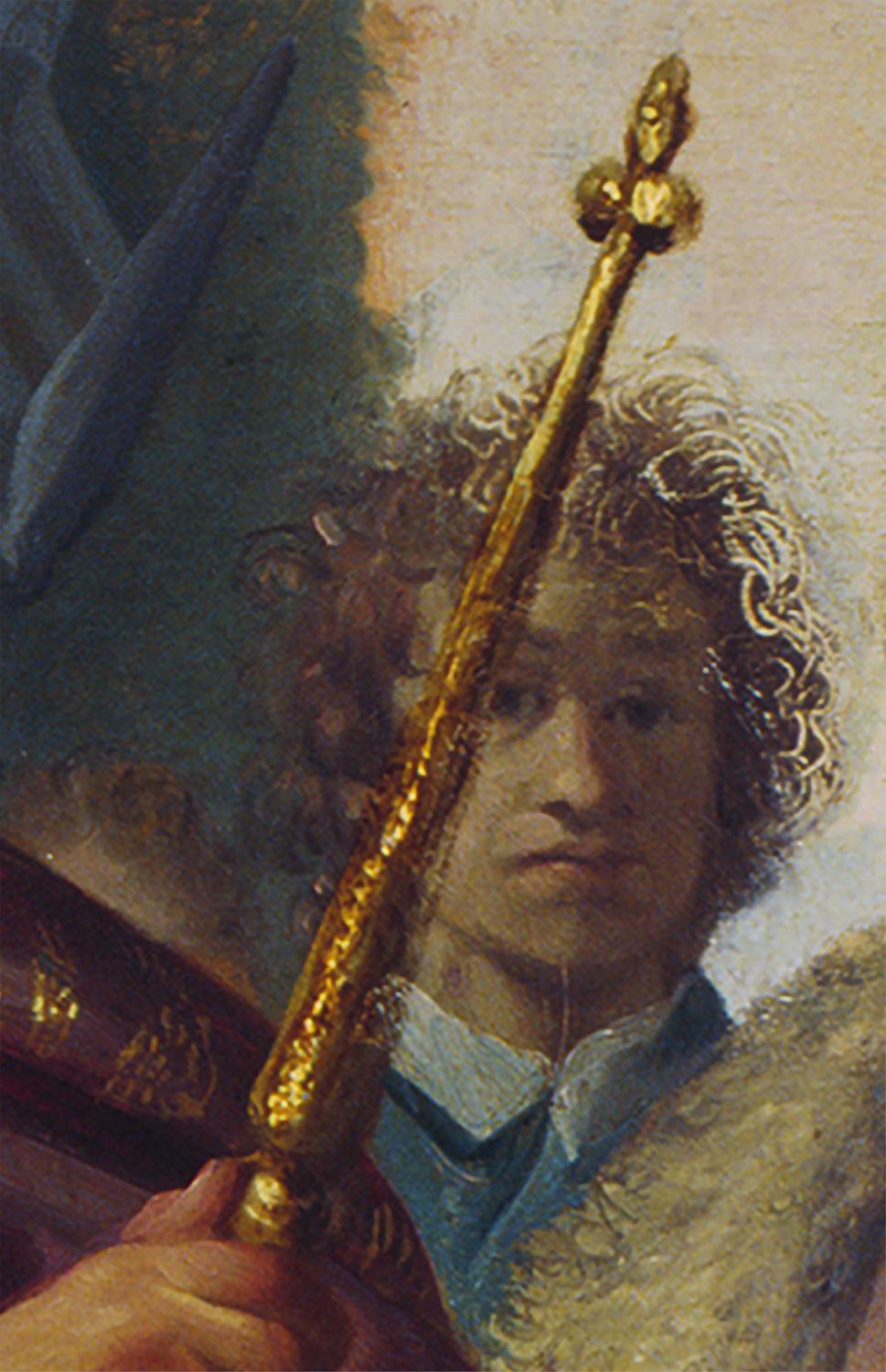
The Leiden History Painting with self-portrait of the painter (detail), 1626.
WHERE TO BEGIN? IT HAD TO BE WEDDESTEEG.
I pulled the door shut behind me and walked into town, keeping the tower of the town hall ahead of me. The seventeenth-century step-gables glittered in the sunlight. After the bluestone in the middle of the surface of Breestraat, the crossing that marked the point where medieval Leiden was divided into four parts, I walked faster and with a lighter step because the street gradually slopes downward towards Noordeinde. There I turned right into the narrow passage.
Darkness. Only above my head glittered the brightness of blue sky. On the left the high wall of an old army barracks, farther on, to the right, a plaque in the faade of a monstrous block of flats commemorated an event of many centuries ago:
HERE was born
on 15th July 1606
REMBRANDT VAN RIJN
With the approach of the three-hundredth anniversary of Rembrandts birth, a few mutterings sounded here and there among the people of Leiden. In Amsterdam, where the painter settled at twenty-five years of age to accumulate riches and fame, the magnificent house on the street then known as Sint-Anthonisbreestraat, where he lived and worked from 1639 to 1658, was purchased by the local council. It was restored and converted into a museum. Since then, the Rembrandt House has attracted hordes of tourists each year.
Nothing of the kind happened in Leiden. In 1906, a committee of erudite scholars descended upon the house of Rembrandts birth. In the gloomy grime of this alley, the elegant gentlemen came upon a derelict stable. A soiled postcard of the interior survives from that era. It shows a crumbling tiled wall and a charred hearth.
A reporter from the local daily newspaper Leidsch Dagblad pocketed the card and went to have a look for himself on 17th May 1906. He was admitted by a stable-hand. On the ground floor was stationed a gleaming, jet-black carriage, a new-fangled coach with the air of a well-fed parvenu. The journalist then proceeded to climb the stairs and had the sense of entering a haunted house. The entire little room is full of shrouds from hearses, dangling from poles like mourning banners.
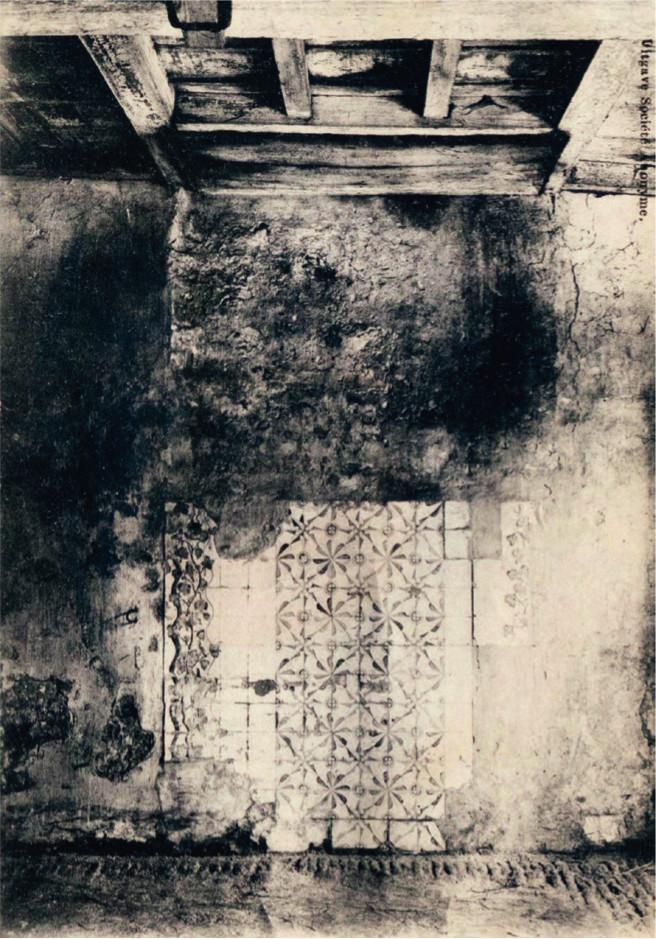
Picture postcard showing the remains of the house where Rembrandt was born, Weddesteeg, Leiden.
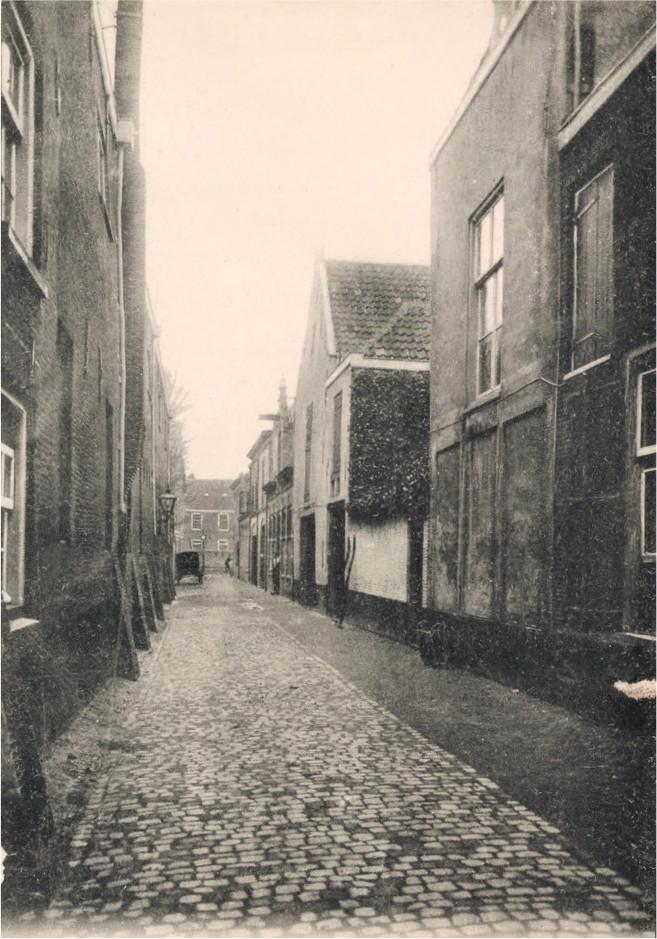
Picture postcard showing Weddesteeg, Leiden.
The committee had a modest plaque attached to the faade, but otherwise it rather pooh-poohed the house where the citys most famous son had been born. With the passage of time, all the buildings in Weddesteeg passed into the hands of the printing firm Nederlandsche Rotogravure, which demolished the house in 1927.
For a brief moment, Leiden showed signs of regret. In 1963, a sham Golden Age faade was erected where the house had once stood: just a wall with nothing behind it. The printing firm had plans to reconstruct the interior behind the fake faade. It purchased seventeenth-century items of furniture and stored them in the municipal museum, De Lakenhal. The plans fizzled out.
In 1980, Rotogravure went out of business and the fake faade was torn down againalong with all the buildings in Weddesteeg. Only the 1906 plaque was salvaged and later bricked into the outer wall of the new block of flats. Embarrassingly, the most recent meticulous research in the city archives reveals that even the plaque is in the wrong place: it should have been ten metres farther down the road. For that was where Rembrandt van Rijn was actually born. In a place that had vanished from the world.
When I arrived at the spot, I saw two foreign tourists pointing at the plaque and nodding excitedly. To me, the scene had an air of tragicomedy about it.
Several metres in front of me, a young man on foot wearing a wide-brimmed black hat crossed the bridge over Galgewater and disappeared from sight.
Where was Rembrandt?
Not here.
If I try to remember when and where I first stood face to face with Rembrandt, I hear the creaking boards of an old wooden floor. I must have been about seven, holding my fathers hand on the threshold of the Large Press in the Lakenhal, the dark upper gallery of the Leiden museum, where the syndics inspected cloth samples in the seventeenth century. As I step inside, the wide oak floorboards sound as if they are cracking under my weight. Its like stepping onto thin ice that might give way at any moment.
It was in the Lakenhal that I saw my first Rembrandt: the 1626 Leiden History Painting, a jam-packed theatrical scene the subject of which is still not known today. It includes a cameo of the young Rembrandt, peering out from behind the sceptre of an imperial figure. Eyes in the dark and a head of wild curls, which he scratched into the wet paint using the back of his brush.
From across the centuries, he met my gaze.
My mother grew up in a house on the bank of the Rhine, where the river flows out of Leidens old city centre. The upstairs apartment on Morskade where my grandparents spent their entire life together overlooked a sawmill, the Heesterboom. When the mills sails were up and started turning, my grandfather and I would clamber into his little crimson boat and row across the Rhine. Together we would enter the mill and ascend the narrow steps up to the top, where we had a view of the entire city.
From within, the enormous machinery grated and bellowed. The axle went round and round, rotating wooden cogs that in turn caused huge serrated blades to move up and down in a rhythmic roar. In a fountain of wood dust, logs were sawn into pieces as if they were no more substantial than matchsticks.
Rembrandt was a millers son: the fact with which almost all biographies of the painter begin. The importance of these origins should not be downplayed: Rembrandts father, Harmen Gerritszoon, came from a millers family that had lived and worked in Leiden for four generations. He and his family owed their entire existence to the malt-mill. They lived on the wind.
Over the years, many fanciful tales have been spun about Harmens mill. We read that Rembrandt had a workshop in it as a young boy, learning about the effects of light there because mills have such small windows. Charming fiction. Arnold Houbraken, who published his lives of Golden Age painters in 17181721, informs us that the mill was located between Leiderdorp and Koudekerk. An old picture postcard of that Rembrandt mill bears a quatrain that may be rendered:
When Rembrandt painted in his fathers mill, still young,
The glory of his artistic power
Was not buried in the clouds of flour
From town to town it sounded and shone.
In reality, the mill belonging to Rembrandts father stood on the western ramparts, right next to the city gate known as Wittepoort. It was a wooden post-mill, with no room for a studio or a boy painter. The mill of his ancestors had been located just outside the city on the Rhine. It is marked in a birds-eye map of Leiden produced by Jacob van Deventer around 1560. In fact it stood, I swear to God, a stones throw from the place where my mother grew up and my grandparents spent their entire lives.
Font size:
Interval:
Bookmark:
Similar books «Young Rembrandt»
Look at similar books to Young Rembrandt. We have selected literature similar in name and meaning in the hope of providing readers with more options to find new, interesting, not yet read works.
Discussion, reviews of the book Young Rembrandt and just readers' own opinions. Leave your comments, write what you think about the work, its meaning or the main characters. Specify what exactly you liked and what you didn't like, and why you think so.

